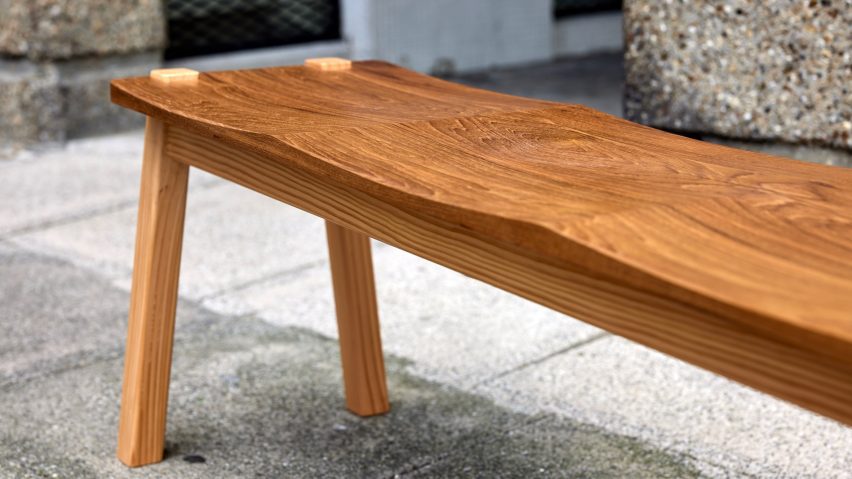
"It's about creating beautiful objects that don't look recycled" says Goldfinger founder
Producing furniture can have a positive impact on people and planet, according to Marie Cudennec Carlisle of Goldfinger, a design brand whose business model includes recycled materials, a training academy and a community kitchen.
Based in the Ernö Goldfinger-designed Trellick Tower in west London, Goldfinger is a furniture maker that operates as a social enterprise and promotes a circular economy.
It manufactures bespoke furniture for clients including Inhabit Hotels and co-living brand Mason + Fifth, and has just launched its first in-house designed furniture range, the Ayrton Collection. It also operates a retail platform, selling products by like-minded brands.
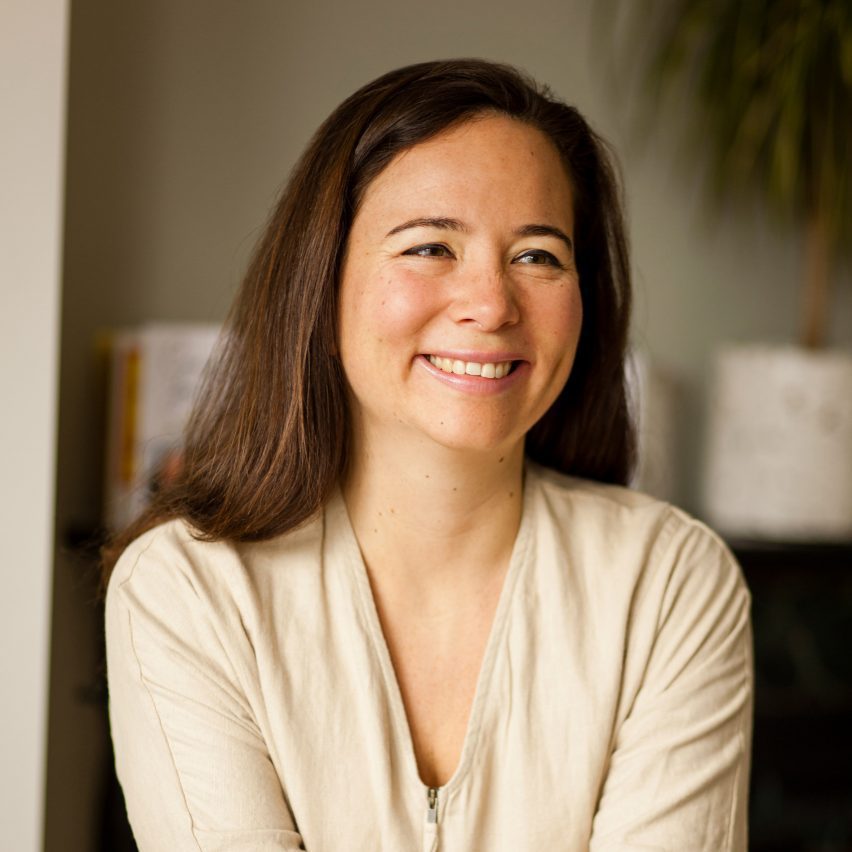
The company uses only recycled or sustainably sourced wood, to reduce its carbon footprint and minimise waste. All profits are fed back into the business – used to fund Goldfinger Academy, which offers education programmes for marginalised young people, and People's Kitchen, a cafe that offers free meals to local residents.
But Cudennec Carlisle, Goldfinger's CEO, doesn't want the brand to be defined by its sustainable credentials. She believes it's more important for people to love the products for their design than for their social and environmental impact.
"It's about creating beautiful objects that don't look recycled," she told Dezeen.
"I want someone to say, 'I want that table', even if they are not interested in people or planet," she said. "By buying it, they are supporting the social and environmental benefits."
Moving beyond shabby chic
Cudennec Carlisle co-founded Goldfinger in 2013, along with former partner Oliver Waddington-Ball. The business initially focused on upcycling old furniture, but Cudennec Carlisle felt this was the wrong approach.
"Shabby chic didn't excite me," she said. "I always say it's more shabby than chic."
With a background in luxury retail, she saw a gap in the market for creating responsible products without compromising on design quality, so that they would appeal to a high-end customer base.
"The most important thing is making Goldfinger an aspirational brand," she explained. "That's the way you have the most impact because you appeal to the widest audience."

Initially, this was achieved through partnerships with leading architects and designers. Tom Dixon, Arup and Holland Harvey are among the studios that Goldfinger – previously known as Goldfinger Factory – has collaborated with on limited-edition furniture and homeware launches.
However, the brand is now keen to establish its own design identity, which is why it is now developing in-house design collections.
"We're working around timelessness, creating heirloom pieces that draw on old-fashioned joints but are very modern looking at the same time," said Cudennec Carlisle.
"One of the greatest measures of sustainability is how long you use an item," she said. "It's not sustainable to buy something from a charity shop, because you want to do good, but then throw it out a year later. That's why we're not trend-based."
Finding sources of sustainable wood
Launching for London Craft Week, the Ayrton Collection includes a desk, chair, bench and side table. The pieces were created by Goldfinger's designer and maker, Daniele Barco, with Japanese-inspired joints and minimal brass detailing.
The one-of-a-kind first edition, which is being auctioned to raise money for Goldfinger Academy, is made using reclaimed teak donated by Imperial College London, and Douglas Fir sourced from British trees that were felled to make way for building development.
Later editions will be made to order in responsibly sourced English elm and beech.
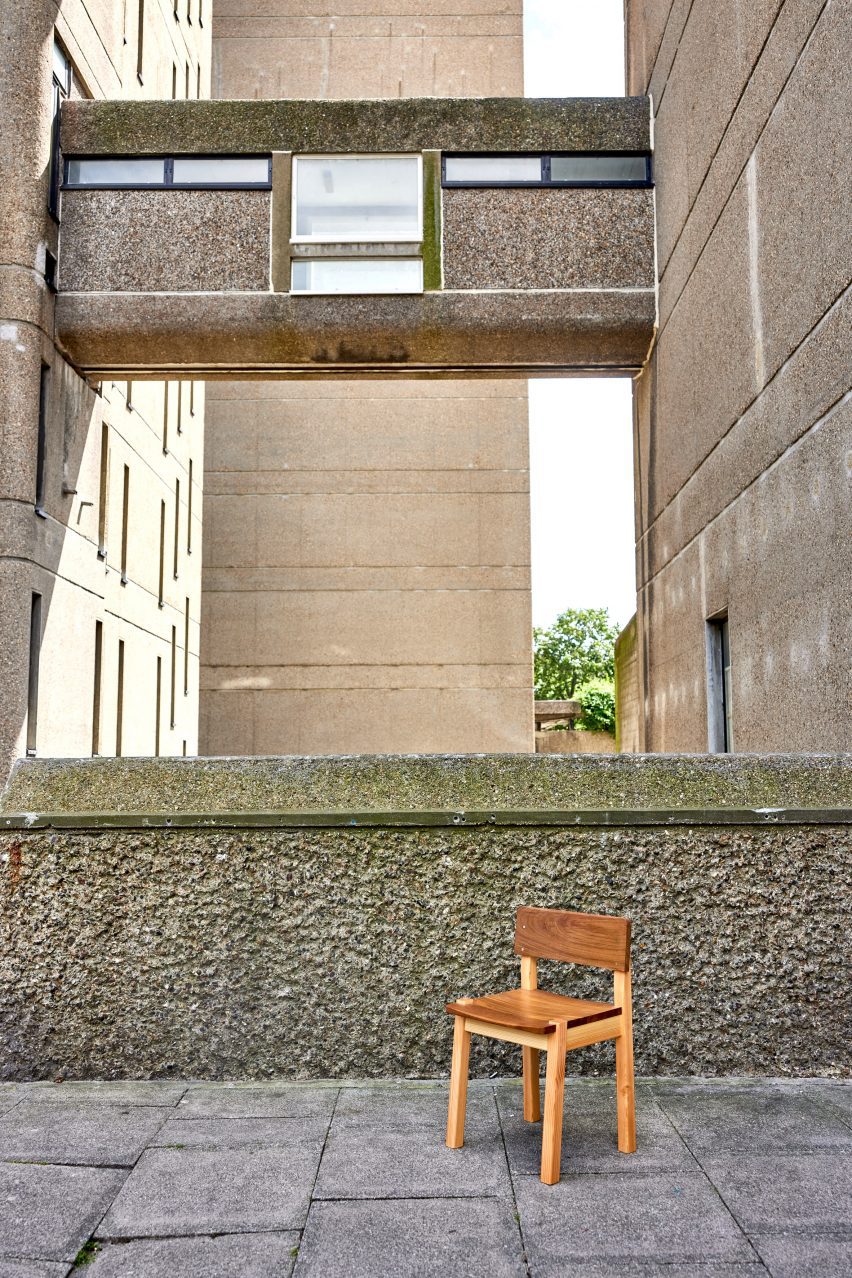
Cudennec Carlisle explained that supply chains are key to Goldfinger's operations. The company sources recycled timber from a range of sources including universities, museums and retailers like Harvey Nichols.
It also works with tree surgeons to source timber that has fallen naturally or been cut down for other purposes, and would otherwise be chipped. Some virgin wood is also used, from select British suppliers.
"We try to get wood that has travelled the least possible distance," said Cudennec Carlisle.
Avoid becoming "an above-ground landfill"
The Goldfinger team are also careful to only accept materials they know they can reuse, "otherwise you just become an above-ground landfill".
Cudennec Carlisle hopes that Goldfinger will inspire more designers and brands to be more circular.
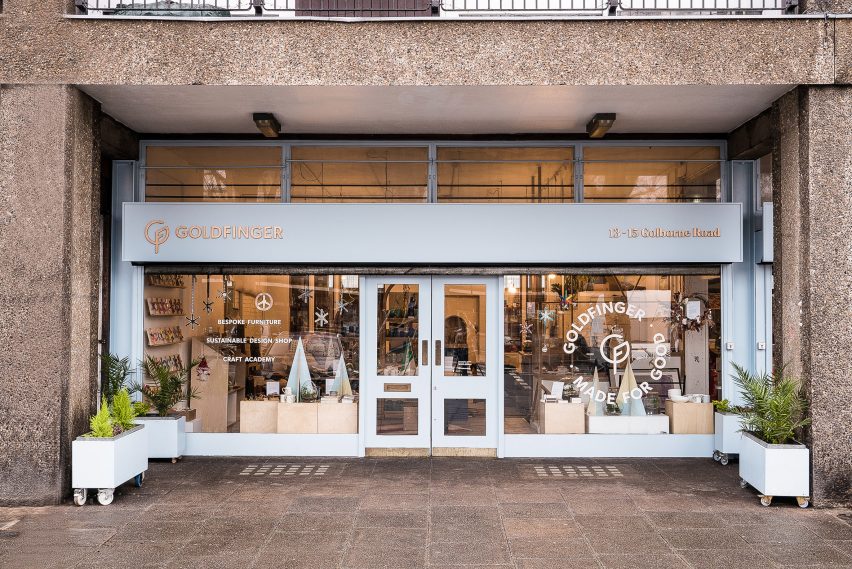
"We need to develop more systems for allowing waste to become treasure," she said.
"It all starts with a mindset shift, which is to start seeing waste as a resource," she added. "We don't like to call it waste, we like to call it surplus materials or resources. I often say waste is just a resource in the wrong hands; they just haven't figured out what to do with it."
Read the full interview with Marie Cudennec Carlisle:
Amy Frearson: What led you to set up the Goldfinger brand?
Marie Cudennec Carlisle: My background is in luxury goods. I've always had a passion and a sensibility for beautiful objects, but there was something really lacking for me in that industry that I couldn't put my finger on. Once I started finding out more about sustainability, I realised what I was missing was meaning and purpose. Did creating beauty have to be at the expense of the planet, at the expense of community?
I came to realise this idea was deep within me from quite a young age. I grew up in Hong Kong and I have this memory, from when I was about eight years old, of being on a boat and seeing a fridge floating in the ocean. It was such a graphic image. I remember being so sad to see that humans were destroying our oceans and damaging our planet. That always stayed with me but it took a while for it to fully manifest into what I was doing.
It was my co-founder that discovered the model of social enterprise, of a business that exists for a social purpose but derives the majority of its income from selling goods and services. He is also passionate about sustainability and is a keen carpenter, so we started looking at a business model of making furniture. Furniture making is incredibly powerful both environmentally and socially, because you can reuse materials that would otherwise be destined for landfill and it's a beautiful vehicle for training, apprenticeships and job creation.
There were already a lot of charity shop models and inspiring up-cycling projects, but no one was doing it in a high-end, design-led way. Shabby chic didn't excite me. I always say it's more shabby than chic. With my luxury branding background, I thought, maybe there's an opportunity to do this with the right ethics, but in a high-end way? Maybe we could create a premium brand that is synonymous with helping people and planet? And so that's how we began, in 2013.
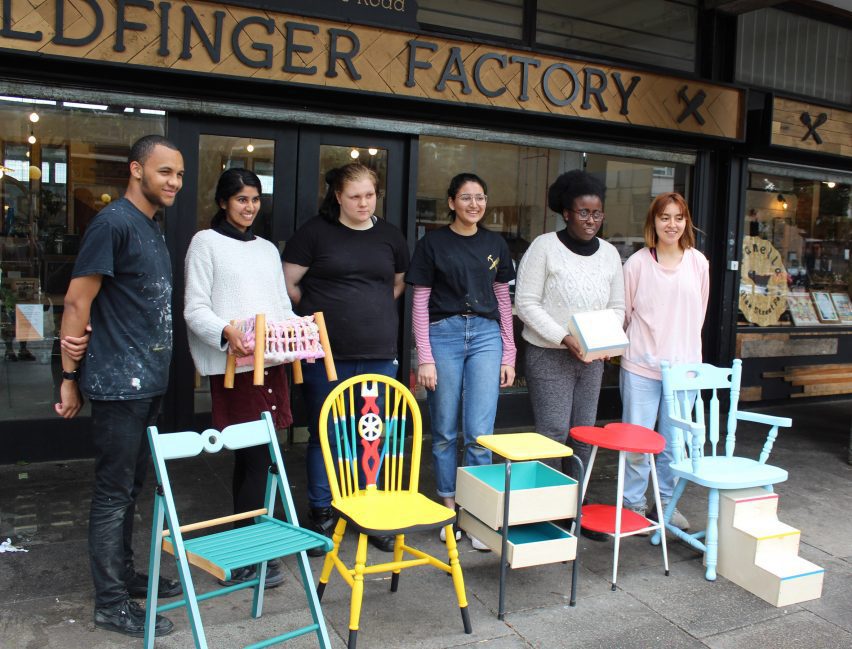
Amy Frearson: How has the business evolved since then? Can you explain your business model?
Marie Cudennec Carlisle: We have a 4,000-square-foot space underneath the Trellick Tower, consisting of a showroom, a restaurant and a workshop downstairs.
At the heart of it, we're furniture designers and makers. We sell bespoke furniture to commercial clients: hotels, restaurants, residential, offices, you name it. We also are a platform for artisans and makers that share our values, so we have a retail platform where we sell sustainably made products. All the profits from the commercial arm go back into the social mission, which take form in the Goldfinger Academy and our People's Kitchen.
Goldfinger Academy is our educational arm, which includes many programmes. In our apprenticeship programme, we take on young people from disadvantaged backgrounds, offering them a different career path as a carpenter or maker. We also work in schools, with children as young as 10 or 11, bringing craftsmanship to the curriculum. It isn't just about employment and skills training, but also about craft as a tool for wellbeing.
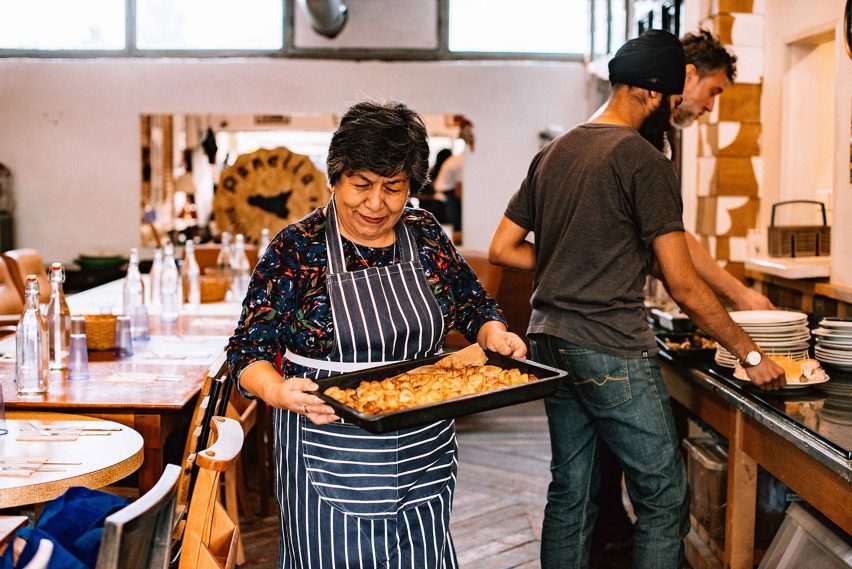
People's Kitchen, our Sicilian restaurant, is the other way we deliver social impact. Pre-Covid we would use surplus food from farmers markets and restaurants to create really beautiful, nutritious feasts that were free for anyone from the community to attend. We started the feasts in 2015 and they were mostly attended by elderly low-income residents from the local social housing blocks, Trellick Tower all the way up to the Grenfell Tower site. In March 2020, we pivoted to become a meal delivery service. We managed to fundraise enough to deliver 150 meals every single Sunday during the lockdown.
Amy Frearson: Why did you choose to associate the business with the architect, Ernö Goldfinger? You are named after him and you are based in one of his buildings, the Trellick Tower. Do you see any comparison between your business and Goldfinger's design ethos?
Marie Cudennec Carlisle: A lot of people think we must have looked for a Goldfinger building space, because it fits our business model so well, but it was the other way round. We lived on the other side of the canal from the Trellick Tower and one day just passed by and saw the space for let.
We strategically wanted to be in an area that had a social need, but that was close to an affluent population. It's a high-end product we're selling at the end of the day, so we need to bring these two communities together. North Kensington is the most affluent borough in the country, but Golborne is one of the most deprived wards in London, so the location seemed perfect.
We play on the Goldfinger connection a lot. The name itself evokes so much transformational power, particularly because of the connection with Ian Fleming – the man with the Midas touch, transforming things into gold. It's a very powerful metaphor for what we do, which is seeing the inherent value and potential in discarded material and overlooked talent. There is a lot of similar thinking with Goldfinger too, with his visions for these towers as social utopias.
Amy Frearson: How does the manufacturing process work when you're using reclaimed or recycled materials, rather than virgin materials?
Marie Cudennec Carlisle: It's all about the network and the supply chain, which we've developed over the past eight years. It started with making calls to various different organisations: construction companies, retailers, museums, universities, anyone who might have surplus material, from planks of wood to desks that can be easily taken apart.
In the beginning, we made the mistake of taking everything we were offered, without looking at how reusable the materials were. We're now a lot more picky about what we take on. There needs to be volume and homogeneity for it to be worthwhile, so we only accept solid timber and we make sure we're getting a good amount. Occasionally we make an exception, like if it's an incredible table with beautiful walnut, which would be tragic to throw away. But otherwise, you just become an above-ground landfill.
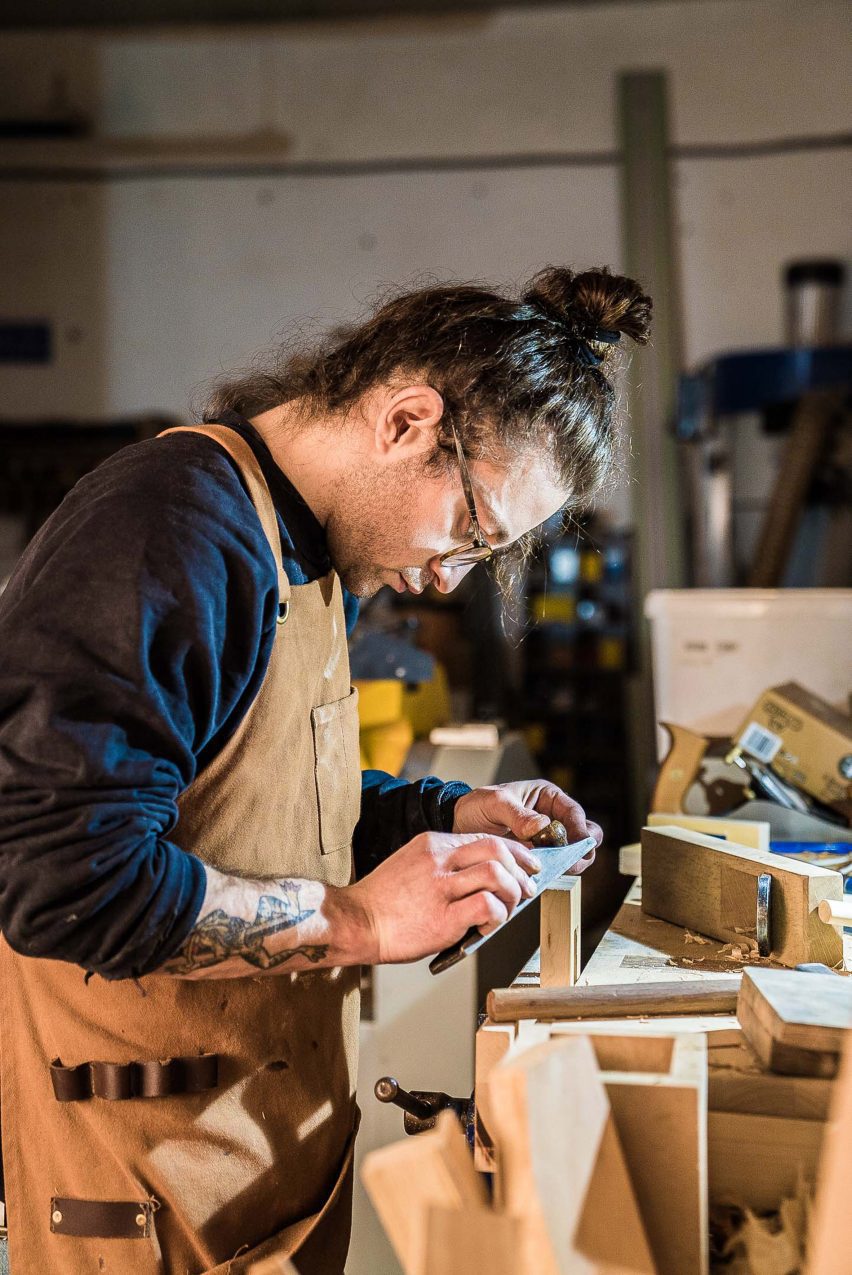
The supply chain has been developing with increasingly more retailers and universities. Recently we had a donation from Harvey Nichols of about a tonne of Western cedar from their Christmas windows and we have made countless furniture pieces from it. The new collection we're launching for London Craft Week is made from teak workbenches donated from Imperial College. Virgin teak is definitely not sustainable, but these workbenches have been in Imperial College for several decades. There's nothing more sustainable than to give this wood a new life.
We've had material from the Design Museum, the Science Museum – all this wonderful wood with a story – but eventually we realised that was limiting. There's only so much you can get from the reclaim side and, as we started taking more commissions from the hospitality sector, we needed to increase our supply chain. So we do also work with sustainably sourced new material.
We try to get wood that has travelled the least possible distance, by using only native British species and working with a huge network of tree surgeons. Many London plane trees get cut down for urban development, fall down during storms or have to be cut down for safety reasons, and often that wood would get chipped. It's almost like reclaimed wood because it would have been destined to disappear.
Amy Frearson: What is your design approach and how much is it impacted by the process?
Marie Cudennec Carlisle: Our design process is often material-led. What do we have? What can we make with this?
We've been very lucky to work with a whole host of designers. Tom Dixon designed a collection for us in 2016. We worked with Arup in 2017. But inevitably what happened those times was that it became their design aesthetic and we ended up being just the fabricator.
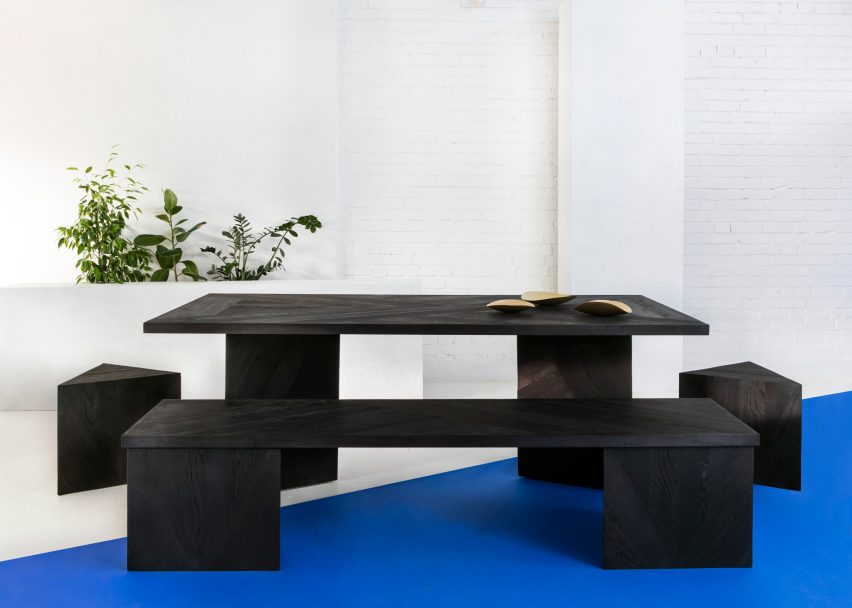
What's exciting at the moment is that we've just had a rebrand and are launching our own collection for the first time. We're working with a creative director and a designer, who are really helping to bring that strategic direction in really defining the Goldfinger aesthetic.
Until recently it was a lot of just client-led commissions, so there was no recognisable aesthetic. It was very difficult to say 'that's a Goldfinger thing'. That is the focus of our work now.
Amy Frearson: Can you describe the Goldfinger design aesthetic you're hoping to develop?
Marie Cudennec Carlisle: We're drawing on the brutalist architecture of the Trellick Tower, our muse in many ways. There's also a biophilic aspect. We have a manifesto, From Tree to Table, which is about being in sync with nature, so there's a very raw and natural aspect to what we do, letting the natural wood shine through. It's not just about what we do, but what we don't do. We use as few finishes as possible and absolutely no MDF.
For me, the most important thing is making Goldfinger an aspirational brand. That's the way you have the most impact because you appeal to the widest audience. I look forward to being able to fully define a Goldfinger aesthetic because for me it's not just about recycling materials. It's about creating beautiful objects that don't look recycled. That has always been the aim. I want someone to say, 'I want that table' or 'That's a Goldfinger table', even if they are not interested in people or planet. By buying it, they are supporting the social and environmental benefits.
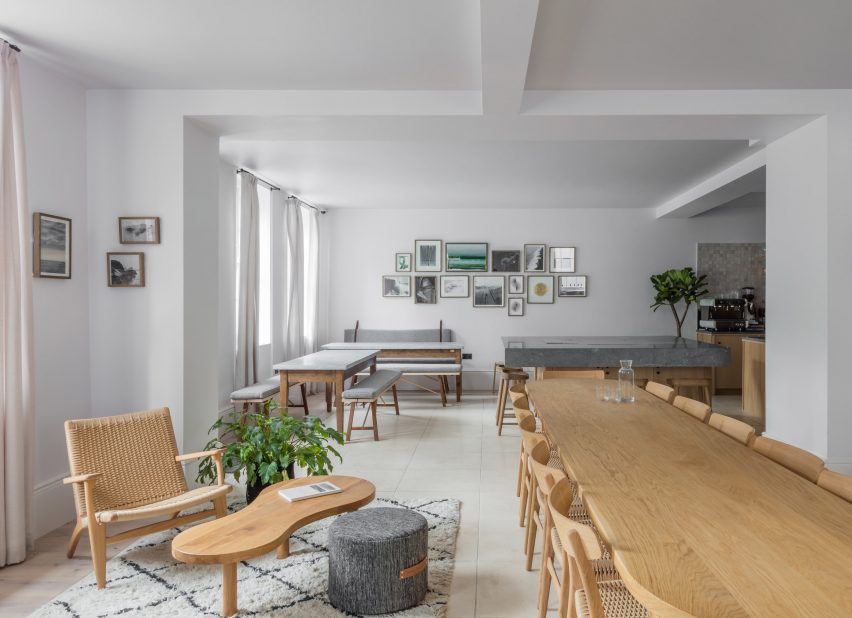
One of the greatest measures of sustainability is how long you use an item. It's not sustainable to buy something from a charity shop, because you want to do good, but then throw it out a year later. That's why we're not trend-based. We're working around timelessness, creating heirloom pieces that draw on old-fashioned joints but are very modern looking at the same time.
The plan is to launch at least two collections a year going forward, so you'll see the Goldfinger aesthetic getting more defined with every collection.
Amy Frearson: What advice do you have for other companies looking to adopt a more circular approach to design and manufacturing?
Marie Cudennec Carlisle: We were just ahead of the curve in thinking about the circular economy. That has given us a very privileged position, to be at the forefront of these conversations and to have had huge partners like John Lewis and Hermès from very early on. We hope to be an inspiration to others to do the same. I think there's a lot we can share, not just in the furniture design industry but the fashion industry too.
It all starts with a mindset shift, which is to start seeing waste as a resource. There is no such thing as waste. It's a manmade concept. When you look at nature, it doesn't exist. Everything goes back into the earth and gets cycled back through. We talk about throwing things away. Where is away? There is no away. When we talk about scarcity of resources, it's all there, we just need to get better at reusing and finding it in different places.
At the beginning, it's less cost-efficient and that's one of the biggest roadblocks to the full adoption of this. But the more we start all doing it, the more these networks get set up and we start really seeing the value in waste.
We don't like to call it waste, we like to call it surplus materials or resources. I often say waste is just a resource in the wrong hands; they just haven't figured out what to do with it. Sadly it's often cheaper to dispose of it than find a new home for it. We need to develop more systems for allowing waste to become treasure.
Amy Frearson: What else can we expect from Goldfinger in the future?
Marie Cudennec Carlisle: One of our plans is to develop Goldfinger as a social franchise model, to help in other geographies. Other carpentry workshops could adopt our principles and become Goldfinger-certified workshops. We could be designing from London, but things could be made locally in France, in the US, in Hong Kong, or just wherever there's a new hotel opening. A lot of the brands we work with are global but we don't want to ship things abroad because that's not sustainable. We want to localise the production.
We also want to increase our retail offering. There's still quite a limited portfolio at the moment, but we'd like to be able to sell wholesale with like-minded brands like Heals and The Conran Shop. By working with partners, we can grow the brand awareness and get more people to come here. Once they do, usually that's it – they're sold, they love it and they want to do more.